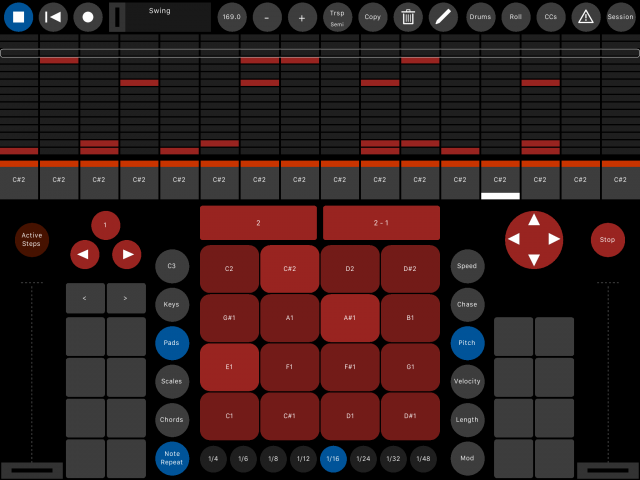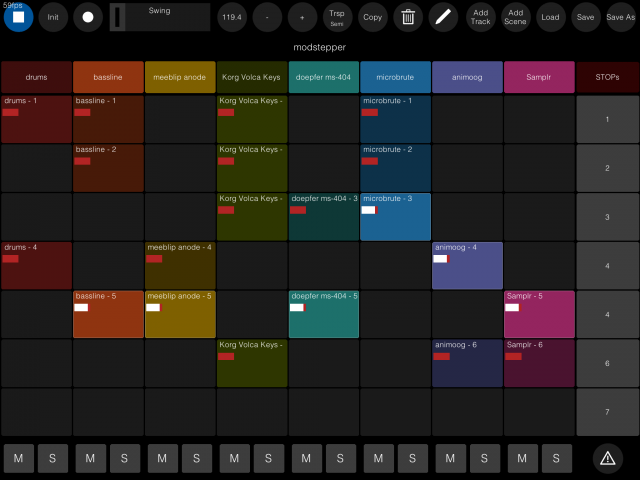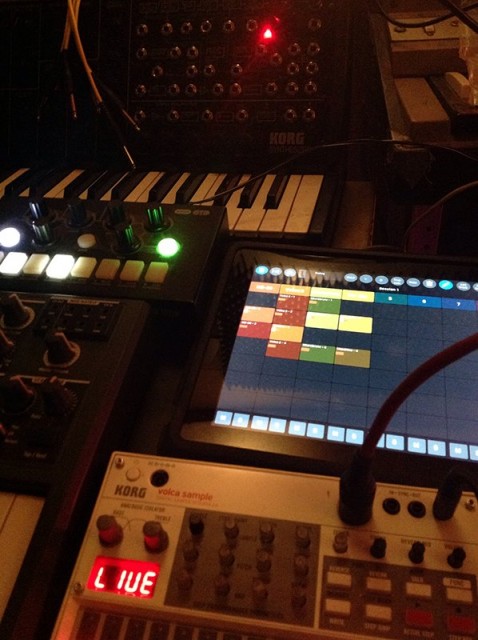Your iPad could be a perfect step sequencer. Could be, anyway.
It’s portable. It’s easy to prop alongside other equipment – the digital equivalent of a music manuscript notebook. It has a long battery life. It can connect to MIDI. And above all, its interface means you can touch the interface directly, which is ideally suited to software that provides an interface to various musical parameters.
And surely you have stuff that needs sequencing. With loads of apps and loads of hardware, a sequencer might be as necessary to your instruments as a conductor and score are to an orchestra.
But burdened by history, a lot of iPad step sequencers aren’t as good as they could be. Some follow the model of hardware, with knobs and faders and analog step sequencing capabilities. There’s nothing wrong with that, but it restricts what you can do – and it’ll always be worse than the hardware it models, because it lacks tangible feedback. Other apps cram a computer software interface for editing onto the iPad’s screen – powerful, but still worse when it comes to usability.
ModStep breaks from the pack. We got a world-exclusive first look at this app this week at the semi-monthly app meetup I host in Berlin (with Electric Drums creator Oliver Greschke). The app isn’t available yet, but I bet we’ll make you impatient for it to arrive. And it has quite a pedigree: the coder is the creator of touchAble, working together with Benjamin Weiss.
ModStep is deep – layers of sequences, rich options for melodies and rhythms. But it builds a workflow around touch. Instead of borrowing superficial features of software or hardware, it includes the actual functionality in drum machines like the MPC and Maschine, then makes them touchable. (Pardon the reference to the developer’s other app. By the way – don’t ever Google that.)
And as such, it’s one of the apps I’m most eager to really begin to use deeply. Good thing I feel that way, as my techno-making partner Nerk is its co-creator. Don’t think that means I’m biased. On the contrary: it means he’s been pushing the darned thing on me every chance he gets, and of course, he knows his way around it an order of magnitude better than I do, so I’m left stupidly tapping around. Plus, part of having a musical collaboration is, whatever your partner says, you first try to say the opposite. But ModStep growing on me.
It does chords.
It does note repeat.
It has chase modes and skips steps and does all the other step operations you’d want to do.
It’s fairly precise for melodic step sequencing – at least in that you get a clear read-out of where you are.
It lets you make more sophisticated rhythms.
It chains clips in an Ableton Session View-style interface, for easy reference to your various layers.
It connects to your computer, via a cable and not only wifi. So if you want sync, or if you want to sequence a software instrument via touch (lovely on the road), you can do so without worrying about wireless performance.
You can use unlimited tracks, and route them anywhere.
It connects apps and hardware via MIDI (via the aforementioned computer, or a USB MIDI interface, or to other apps locally).
It can send trigger.
It works on all iPads – even the old ones.
In short, it’s everything you wanted, all at once.
Here you can see it happily humming along with some hardware:
ModStep is still at its heart a step sequencer. This is about playing by adjusting parameters, sequencing series of notes rather than playing them directly on a keyboard or the like. And it isn’t Auxy, either, the app we saw earlier this week that focuses on drawing into a piano roll.
But what it is is a damned good step sequencer. ModStep fits into a perfect gap, one sorely left by dedicated multitrack sequencing hardware on one hand and computer software on the other. Hardware step sequencers are beautiful, but as I believe we’ll see with the new Arturia BeatStep Pro, a good tactile interface necessarily means simplifying sequencing capabilities. ModStep could be the app that fills what lies between: all the power of a computer sequencer, but designed in such a way that lends itself to performance and mobility.
If you’ve amassed lots of iPad apps for music, or lots of hardware, or both, I expect I may have gotten you rather excited.
So, yes, we’ll be looking at this more. Christian and Benjamin promise some videos and other tips. If you have specific questions, I can answer them. And we’ll have something to do while we wait.
https://www.facebook.com/modstepapp


